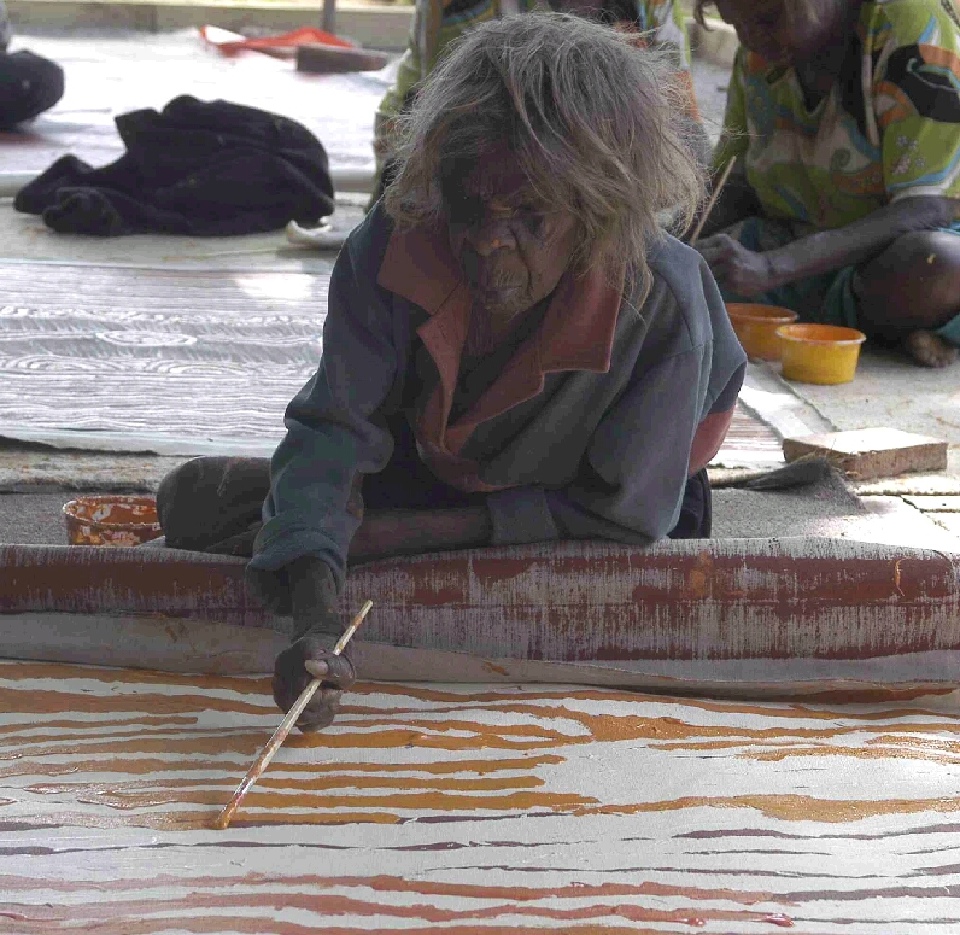Makinti Napanangka

DOB:
c.1930 - 2011
Born:
Lake MacDonald, WA
LANGUAGE GROUP: Pintupi
COMMUNITY: Kintore, NT
Makinti Napanangka was a senior Pintupi woman, born in the area of Karrkurritinyja (Lake Macdonald) around 1930. Her first contact with Europeans was with men travelling on camels near Lupul. She walked in with her family to Haasts Bluff before the Papunya Community was established and now resides at the Kintore Community.
Makinti was introduced to acrylic painting in 1995 as a member of the Haasts Bluff-Kintore painting project which was conducted at Kintore. She commenced painting for the Papunya Tula Artists in 1996, and quickly developed her own style: Makinti's art is characterised by a more spontaneous approach in illustrating the traditional iconography than that done by previous artists painting at Papunya.
Makinti and her husband, Nyukiti Tjupurrula Makinti, often painted designs associated with travels of Kungka Kutjarra (Two Women). The patterning that feature in her paintings represent the swirling hair-string skirts worn by the Two Women during ceremonies when they reaffirm these mythological stories through dance and song, evident in the flowing rhythms of the lines.
These skirts are woven by the women from human hair using a simple spindle made of two sticks, and are shown as a complex pattern of pale lines over an orange or ochre-coloured background then set off with contrasting colours, often mauve or bright yellow highlights. The works are cheerful and free flowing, intensified at times by the addition of a stray grey-blue line or a patch of crimson, red or purple.
Makinti was not concerned with neatness, or the painstaking 'dot by dot' approach of others. Her bands of lines form the sweeping arcs, creating patterns that twist and bend. She was very different even to her Pintupi contemporaries. The impact of her work is haptic, concerned with touching and sensing with fingers, rather than purely visual. The repetition of colour has a rhapsodic effect akin to many bodies in dance and reveals the inner or spiritual power, the essence, of Makinti's country and cultural identity. Makinti distilled body-painting designs to their quintessential forms, abundant and looping in rhythm and seeming to stretch beyond the frame.
Makinti Napanangka was one of the leading female artists of the Papunya Tula artists. Her work is highly sought after and is represented in major public and private collections. She was named as one of the 50 Most Collectable Australian artists in Australian Art Collector Issue 23, January - March 2003, Issue 27, January - March 2004 and again in Issue 31, January - March 2005. She has been described by Utopia Art's director as the Central Desert's "best painter since Emily (Kngwarreye), with no living match in her painterly freedom, and her fearless blend of naive and sophisticated elements".
